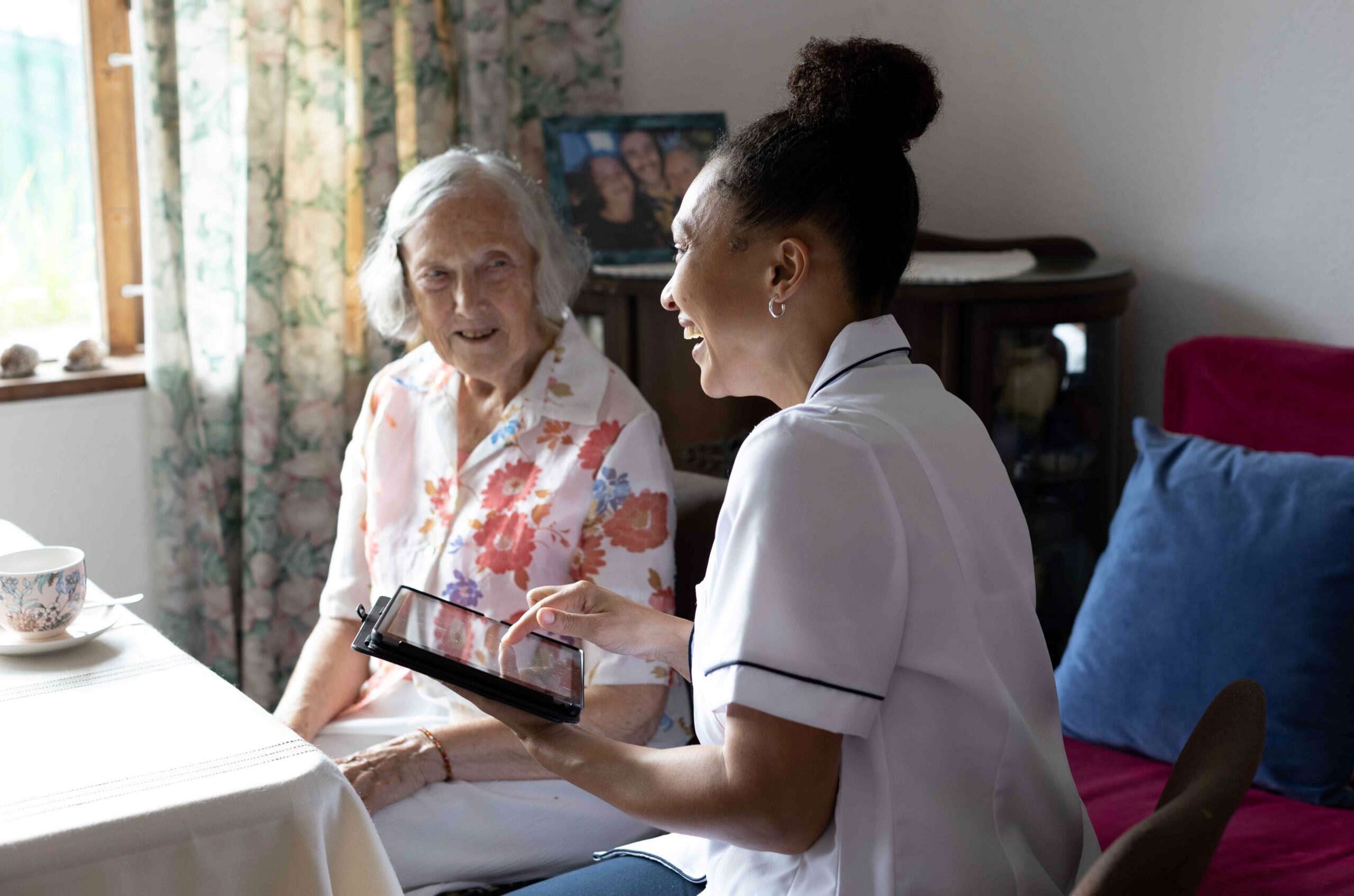How to improve patient and taxpayer outcomes with innovation

Stuart Watkins, Strategy Manager for Health at Crown Commercial Service (CCS), explains the 3 main stages of buying digital transformation solutions in the NHS, with a clear breakdown of programme stages and projects along the way.
Digital transformation solutions in the NHS can help health and care professionals communicate better and enable patients to access the care they need quickly and easily, when it suits them. It’s vital that our NHS health services, staff and patients are ready.
How, where, and when patient care is given is evolving towards smart healthcare services, where technology is embedded across clinical pathways and the digital patient is the new normal.
From websites and apps that make care and advice easy to access wherever you are, to connected computer systems that give staff the test results, history and evidence they need to make the best decisions for patients, technology can support improvements in patient care.
Innovative technology procurement
Technology procurement in the NHS touches on everything from network refreshes to artificial intelligence, virtual wards and patient self-referral. Health organisations, at whatever stage of their smart healthcare journey, require a robust technology procurement strategy that builds close collaboration between their procurement and ICT functions.
They also need to achieve value for money through their procurements, delivering against clear integrated care system requirements and cost improvement programmes – all while keeping social value and carbon net zero agendas front of mind.
A 3-step guide to digital transformation
To help the NHS meet these objectives for procurements, CCS has developed a step-by-step guide, setting out the three main stages of buying digital transformation solutions in the NHS, with a clear breakdown of programme stages and projects along the way.
Aimed at clinicians, ICT professionals, procurement professionals, CEOs and board executives, the guide supports NHS England’s ‘digital first’ guidance and makes a process that can all too easily go wrong more straightforward.
NHS trusts and ICS digital programmes that need to rationalise suppliers, save money, secure value, and ensure interoperability requirements are met will benefit from using the guide.
Covering a comprehensive programme of projects, the guide makes it straightforward for the NHS ICT functions to assimilate into their own ‘live’ digital programmes today. It is organised around the 3 key phrases of digital transformation (Prepare, Transform, Enhance).
Let’s take a brief look at these 3 phases:
1. Prepare
The first step is to develop a technology strategy that aligns with the trust’s organisational development plan and its intended outcomes. From here, you can develop your programme, create your design and delivery structure, prepare outline and full business cases, and allocate budgets.
Next, it is important to review existing assets with the aim of getting the “maximum value from what you already have”. Start by looking at where your core infrastructure and networks need refreshing. Then, explore how unified communications can bring together phone, email, and instant messaging to complement each other and encourage collaboration.
This is also the stage to consider how devices, applications, and databases will be rolled out and managed, and how cyber security requirements can be met.
2. Transform
The ‘transform’ stage invites users to consider how best to digitise patient records: these can be integrated into software and clinical systems, facilitating the delivery and receipt of patient data digitally at the point of service.
For example, if you need to scan historic paper records, consider what further processes and resources are required. You’ll need a validation process to check that scanned documents match the original paper versions and create new workflows to ensure they are available securely.
Smart technologies can also be deployed to enable patient participation and empowerment throughout their clinical pathways. You could integrate systems such as picture archiving and communication (PACS), radiology, pathology, pharmacy, and bedside monitoring, focusing on interconnection and sharing of data, using unified messaging standards such as Health Level Seven. This is also a good time to:
- Review data warehousing, looking at how a central data store could improve reporting and analysis.
- Build integration into your solutions.
- Consider how to extend use securely to other organisations, such as primary, acute, mental health, and social services.
3. Enhance
In the ‘enhance’ stage of the digital transformation process, the focus should be on early intervention and prevention initiatives, in partnership with other healthcare providers in the integrated care system. Everyone involved in the technology procurement should be thinking about people, not tech. At this stage, you should be aiming to put the digital patient at the heart of everything you do.
Smart “champions” who take ownership of the process can help keep the focus on the people who are supposed to benefit from the transformation, while training providers can create bespoke training programmes that empower users and tackle change resistance.
You may even want to consider how apps could help improve the patient experience and provide easy access to clinical services.
The guide suggests that the “enthusiasm” of patients who are already using smart technologies to manage their health can be utilised to encourage widespread change. But it also emphasises the importance of ensuring that digital healthcare solutions are inclusive and accessible to the most vulnerable and disadvantaged people.
There is danger in assuming that all patients and their carers have the necessary digital skills to benefit from new digital healthcare services. This is not always the case and why you should consider how to provide support to anyone who cannot access digital services independently, helping them to find information and complete transactions.
Finally, it’s vital to ensure digital inclusion by helping patients and their carers gain basic digital skills so that they can access these digital services in order to benefit from better healthcare.
You can download the guide from the CCS website.
